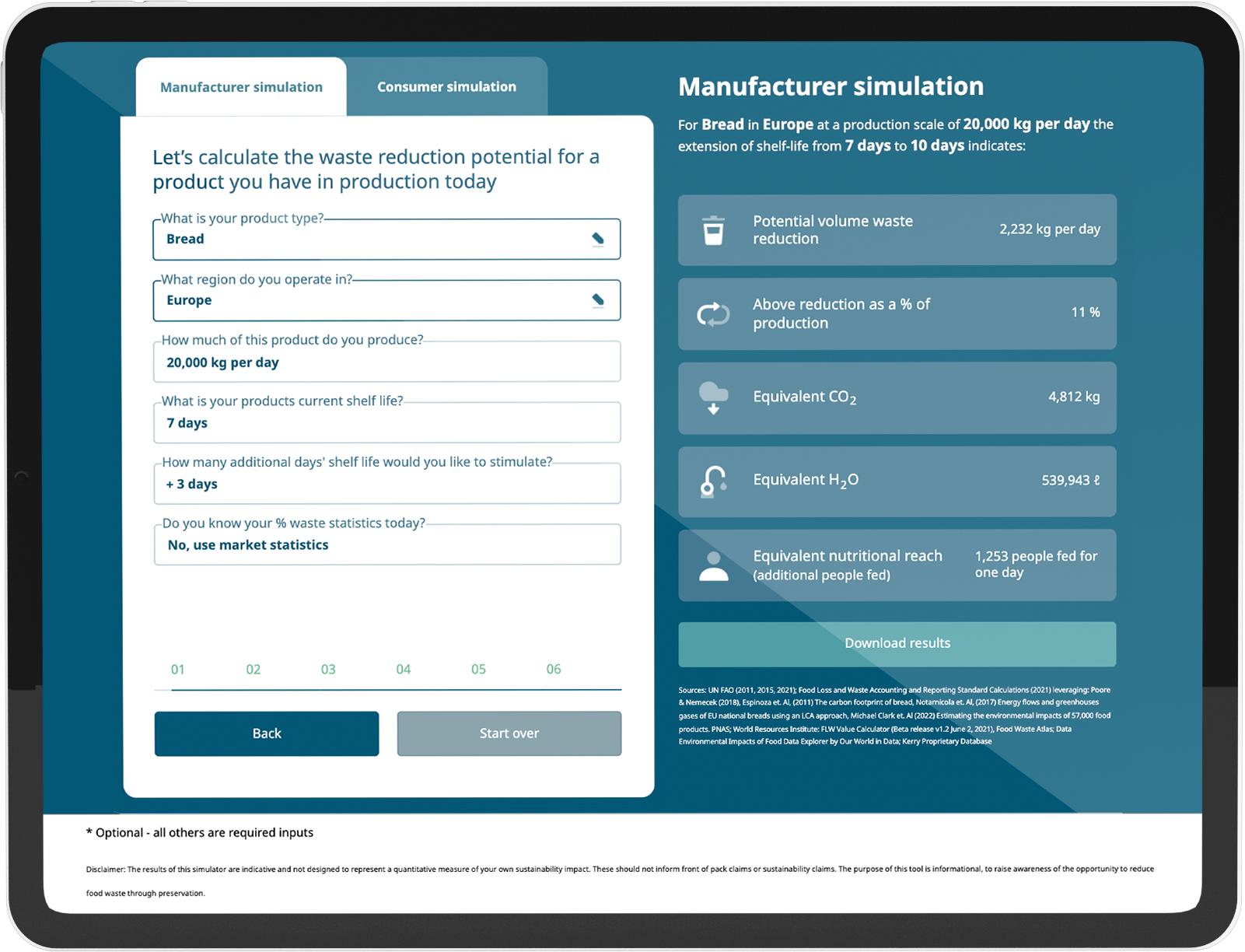











For





Sources: UN FAO (2011, 2015, 2021); Food Loss and Waste Accounting and Reporting Standard Calculations (2021) leveraging: Poore & Nemecek (2018), Espinoza et. Al, (2011) The carbon footprint of bread, Notarnicola et. Al, (2017) Energy flows and greenhouses gases of EU national breads using an LCA approach, Michael Clark et. Al (2022) Estimating the environmental impacts of 57,000 food products. PNAS; World Resources Institute: FLW Value Calculator (Beta release v1.2 June 2, 2021), Food Waste Atlas; Data Environmental Impacts of Food Data Explorer by Our World in Data; Kerry Proprietary Database
Half of all food waste is caused by food reaching its use-by date. By adding shelf-life days, you can cut waste. In turn this can reduce emissions linked to climate change as well as make the planet’s resources available to feed more people.
There are also cost savings and benefits to uncover from longer shelf life and the associated waste reduction at different stages of the supply chain such as:






UNEP Food Waste Index Report 2021, Adjusted for Medium and High Confidence Estimates Only; RTS "Food Waste in America in 2022"; United States Environmental Protection Agency; UNEP Worldwide Food Waste; Environmental Impacts of Food Data Explorer by Our World in Data; UN FAO 2021, Leitão et. Al (2018) Improving Household's Efficiency via Scheduling of Water and Energy Appliances, Ercan et. Al (2016) Life Cycle Assessment of a Smartphone; Kerry Proprietary Database
As you can see, with a % waste reduction, you can make a real difference, cutting the use of natural resources and reducing emissions linked to climate change. There’s also money savings to add to the incentive.
Too Good To Go, whose mission is to make sure food gets eaten not wasted, have shared some great tips on how to reduce your food waste: